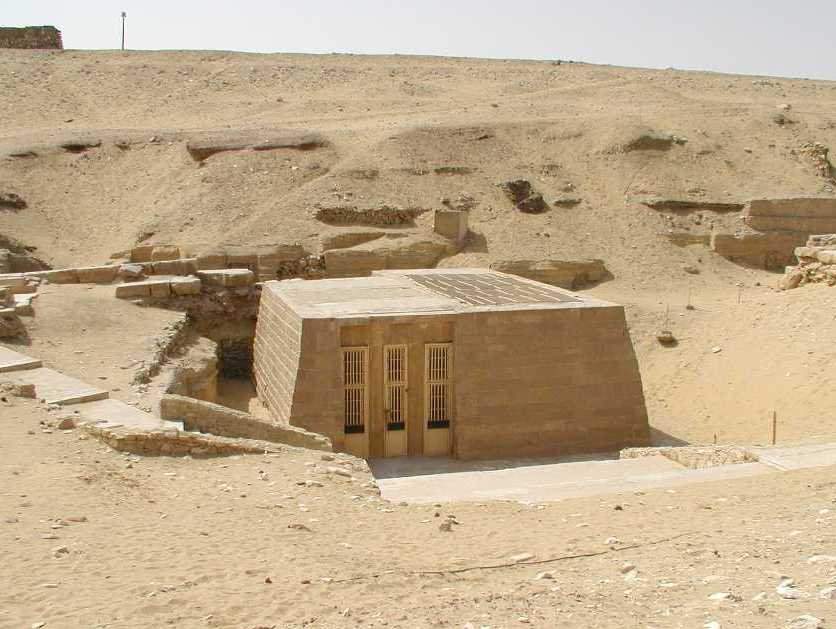
Khnumhotep and Niankhkhnum World History Amino
The totally undecorated burial chamber area of the installation of Niankhkhnum and Khnumhotep, presumably created during the second phase, can be reached by a sloping tunnel which proceeds in a southwards direction, and which passes directly under the antechamber of the tomb (). The access to this tunnel begins directly before the rock-cut section of the tomb, in the floor of the rebuilt.

A relief from the mastaba of Niankhkhnum and Khnumhotep, Metalworkers
Embracing His Double: Niankhkhnum and Khnumhotep January 2008 DOI: Authors: Vera Vasiljevic University of Belgrade Abstract The paper examines the names of Niankhkhnum and Khnumhotep,.
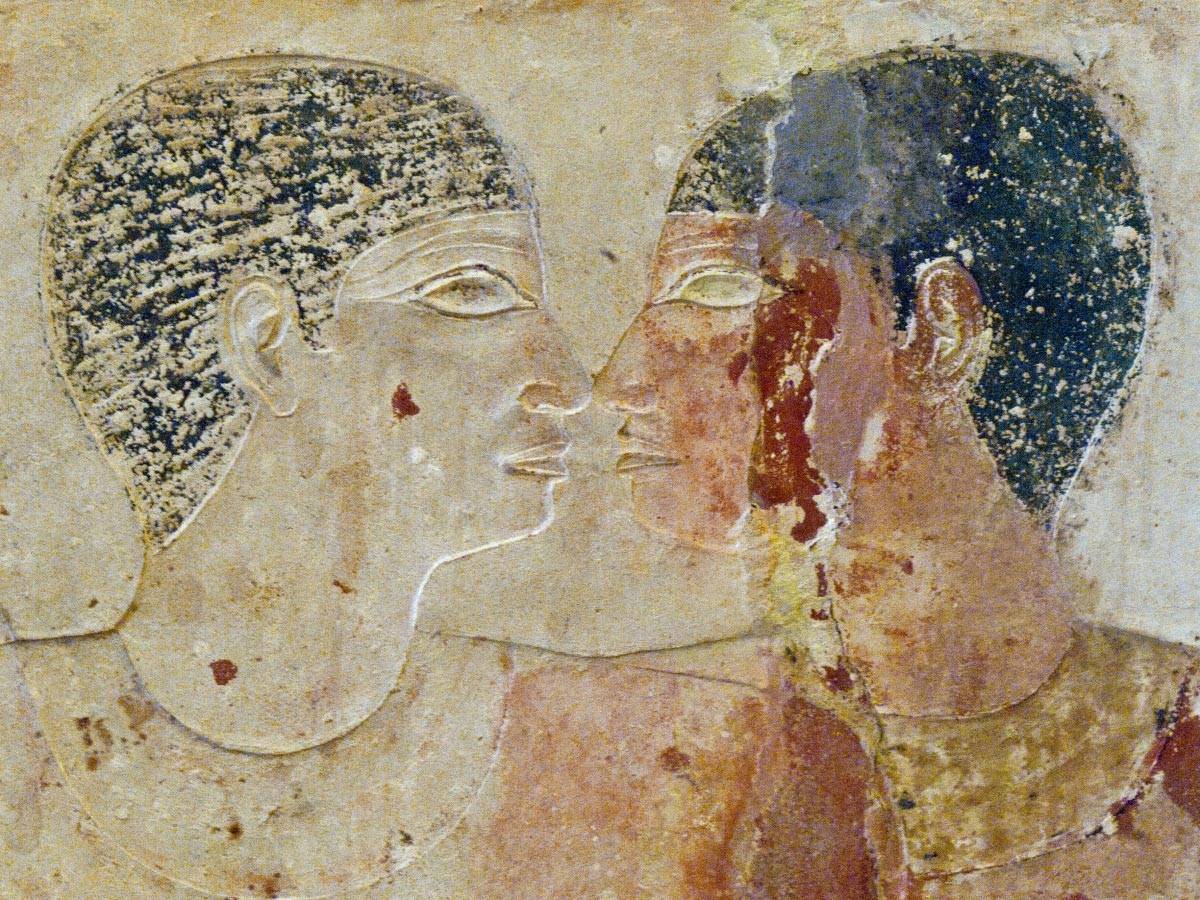
In All Their Looks & Words The Tomb Of Niankhkhnum And Khnumhotep Part
The tomb of Niankh-Khnum and Khnumhotep, Saqqara Both Niankh-Khnum and Khnumhotep served in the royal household of Niuserre Ini during the 5th Dynasty. Their joint tomb was discovered by Ahmed Moussa at Saqqara in 1964, and their relationship has remained subject of scholarly debate ever since.
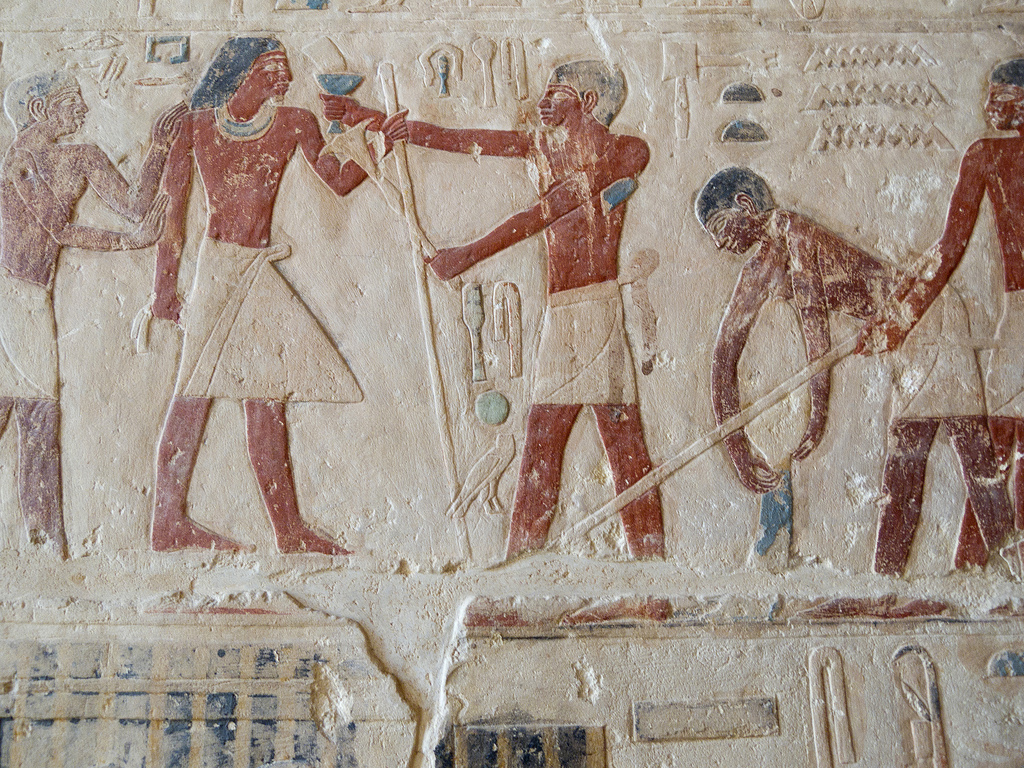
Turma da História Khnumhotep e Niankhkhnum, 2 homens que foram
The mid-Fifth Dynasty tomb of Niankhkhnum and Khnumhotep has bafled scholars since its discovery by Ahmed Moussa at Saqqara 52 years ago (1964).1 At the centre of the controversy are the tomb's enigmatic owners, as reflected in both the texts and decoration.

Khnumhotep + Niankhkhnum by MeteoDesigns on DeviantArt
Their names, Niankhkhnum and Khnumhotep suggest another clue, Dr. O'Connor said. Both names refer to the god Khnum, the deity who fashions the form of a child in the womb. Though not an uncommon.

Tomb of Khnumhotep and Niankhkhnum Stock Image C027/8005 Science
On the eastern wall of the offering chamber, the identical pair are shown in the most intimate embrace possible within the canons of ancient Egyptian art. Niankhkhnum is on the right grasping his companion's right forearm; Khnumhotep, on the left, has his left arm across the other man's back, tightly clasping his shoulder. Again the tips of the.

Ancient Egypt Tomb of Niankhkhnum & Khnumhotep Ancient egypt
The tomb of the royal manicurists Nianldikhnum and Khnumhotep,1 located at Saqqara, south of Unas causeway, not only enriches the written and iconographic source material with new data, but also attracts attention for a number of special features.
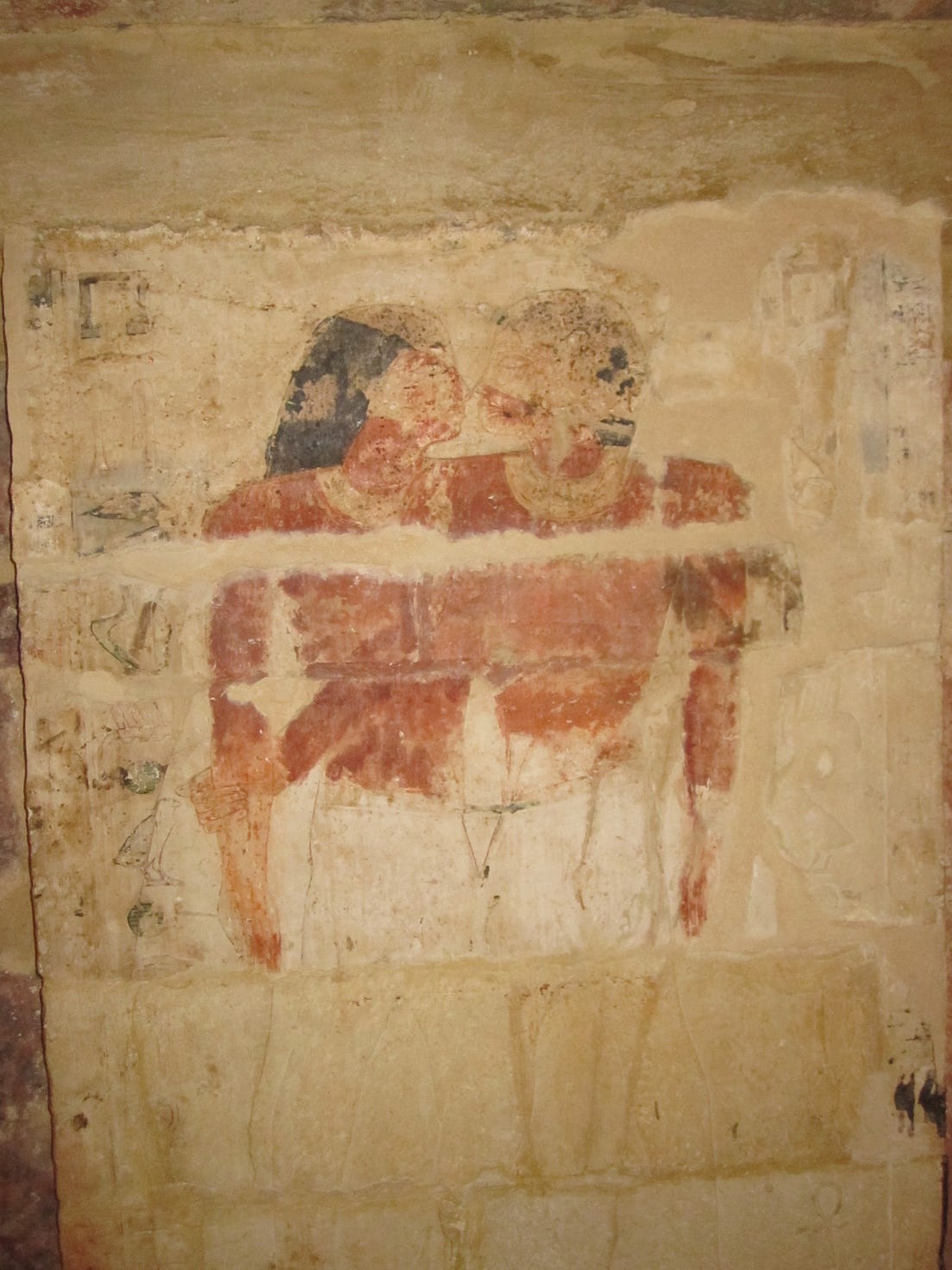
The First Recorded SameSex Couple in History by Katlyn Roberts Mar
Illustration. by kairoinfo4u. published on 31 May 2021. Download Full Size Image. Wall -painting from the tomb of Khnumhotep and Niankhkhnum, two royal officials who have been identified as possibly brothers or a same-sex couple. Reign of Nyuserre Ini, late 25th Century BCE. Saqqara, Egypt.
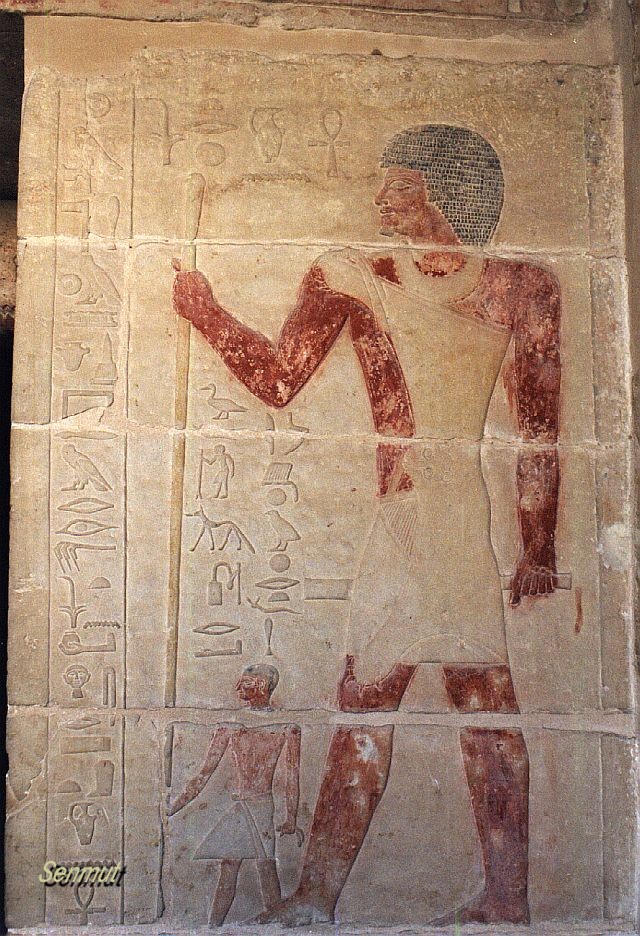
Niankhkhnum and Khnumhetep Egyptphotos
THE TOMB of NIANKHKHNUM and KHNUMHOTEP. a series of tombs with rock-cut passages in the escarpment facing the causeway that lead to the pyramid of Unas. Soon after the Chief Inspector Mounir Basta reported crawling on his hands and knees through the passages, entering one of the Old Kingdom tombs. He was impressed with its unique scenes of two.

Khnumhotep and Niankhkhnum Egyptian Art Fresco Etsy Australia
The Mastaba of Niankhkhnum (meaning "life belongs to Khnum") and Khnumhotep (meaning "Khnum is satisfied"), dating to the mid 5th Dynasty and probably either to the reign of Niusserre or Menkauhor, is located in the sector of the Pyramid of Unas at Saqqara. It is unusual, having been built for two officials, Niankhkhnum and Khnumhotep.

Khnumhotep and Niankhkhnum History's first samesex couple — Daily Tribune
Explore a captivating glimpse into the past at the Niankhkhnum and Khnumhotep Tombs, two remarkable archaeological sites nestled within Egypt's historic sands. Dating back to the revered Fifth Dynasty of the Old Kingdom, these tombs offer a unique window into the artistry and culture of ancient Egypt. Step into these tombs and journey through time.

The Kiss, Niankhkhnum and Khnumhotep by Brightstone on DeviantArt
Khnumhotep ( Ancient Egyptian: ẖnm.w-ḥtp (.w)) [1] and Niankhkhnum ( Ancient Egyptian: nj-ꜥnḫ-ẖnm.w) [2] were ancient Egyptian royal servants. They shared the title of Overseer of the Manicurists in the Palace of King Nyuserre Ini, sixth pharaoh of the Fifth Dynasty, reigning during the second half of the 25th century BC.
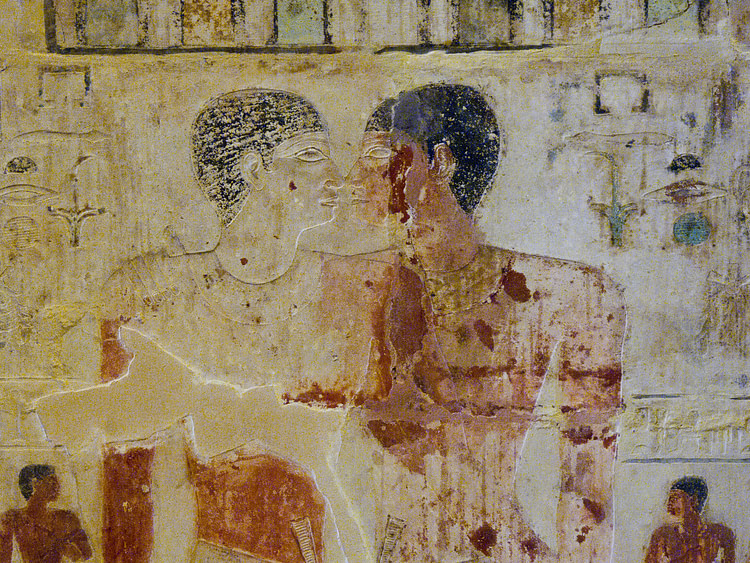
Mastaba of Niankhkhnum & Khnumhotep (Illustration) World History
The 5th Dynasty tomb of Niankhkhnum and Khnumhotep, located in Saqqara, has been subject to much debate amongst Egyptologists, namely concerning what the relationship was between these two figures who share a tomb. One argument is that this is the tomb of a same-sex couple.
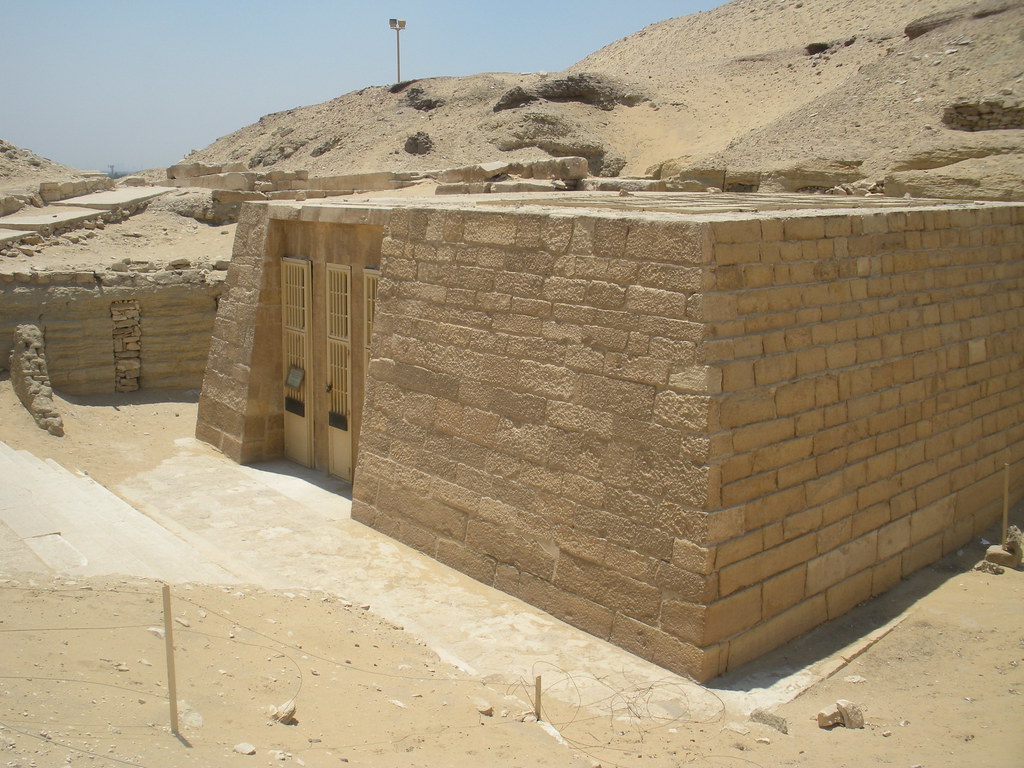
Tomb of Niankhkhnum and Khnumhotep Tomb of Niankhkhnum and… Flickr
Khnumhotep ( Ancient Egyptian: ẖnm.w-ḥtp (.w)) and Niankhkhnum ( Ancient Egyptian: nj-ꜥnḫ-ẖnm.w) were ancient Egyptian royal servants. They shared the title of Overseer of the Manicurists in the Palace of King Nyuserre Ini, sixth pharaoh of the Fifth Dynasty, reigning during the second half of the 25th century BC.

Khnumhotep and Niankhkhnum
The tomb of Khnumhotep and Niankhkhnum was discovered by Egyptologist Ahmed Moussa in the necropolis at Saqqara, Egypt in 1964, during the excavation of the causeway for the pyramid of King Unas. It is the only tomb in the necropolis where men are displayed embracing and holding hands. In addition, the men's chosen names (both theophorics to the creator-god Khnum) form a linguistic reference.

Tomb of the Two Brothers Niankh‑Khnum and Khnumhotep Discover Egypt's
The tomb of royal manicurists Khnumhotep and Niankhkhnum was discovered by Egyptologists in 1964. Described in the hieroglyphics as "royal confidants," the men were among the privileged few people who were actually permitted to touch the pharaoh.